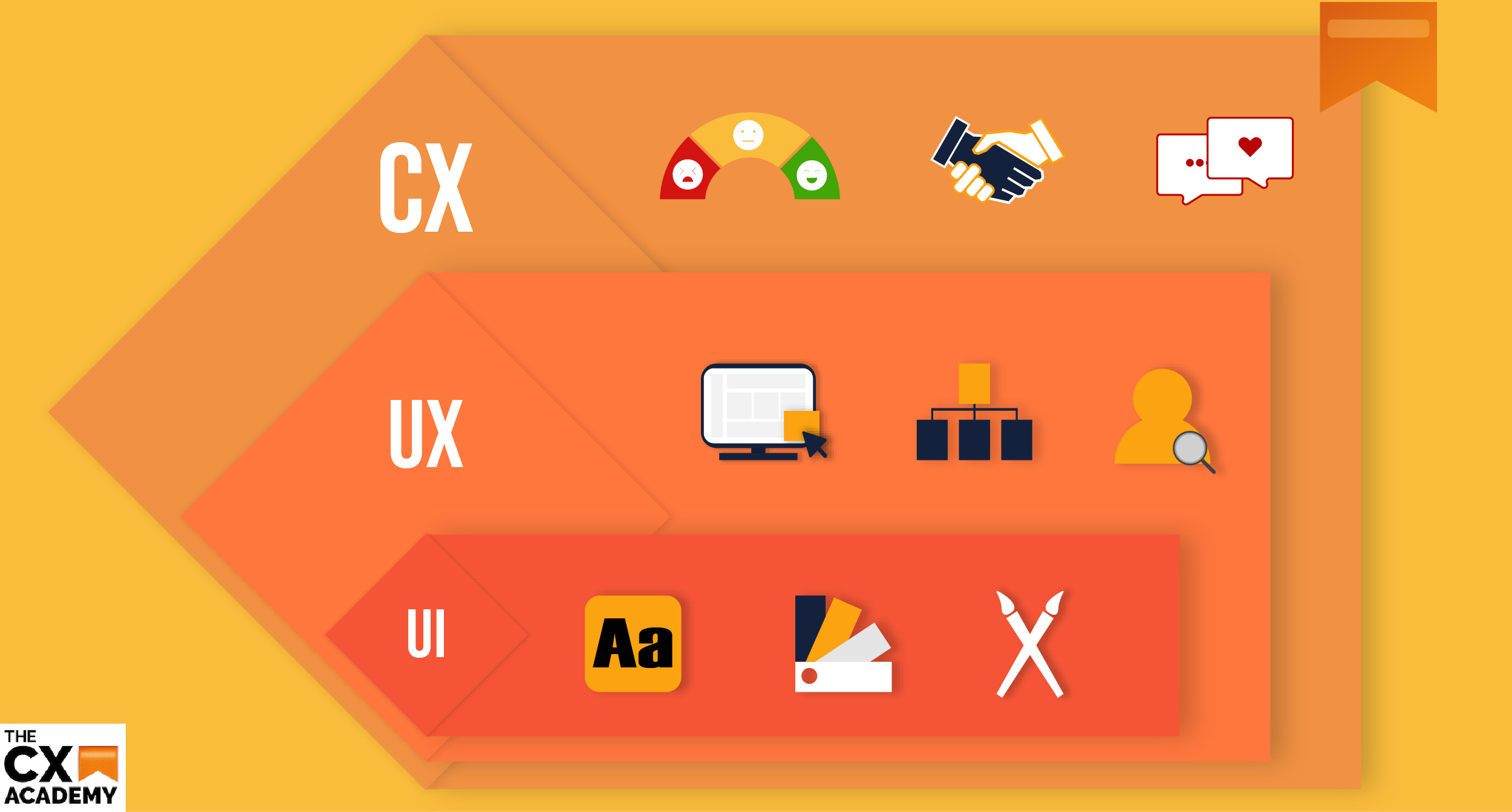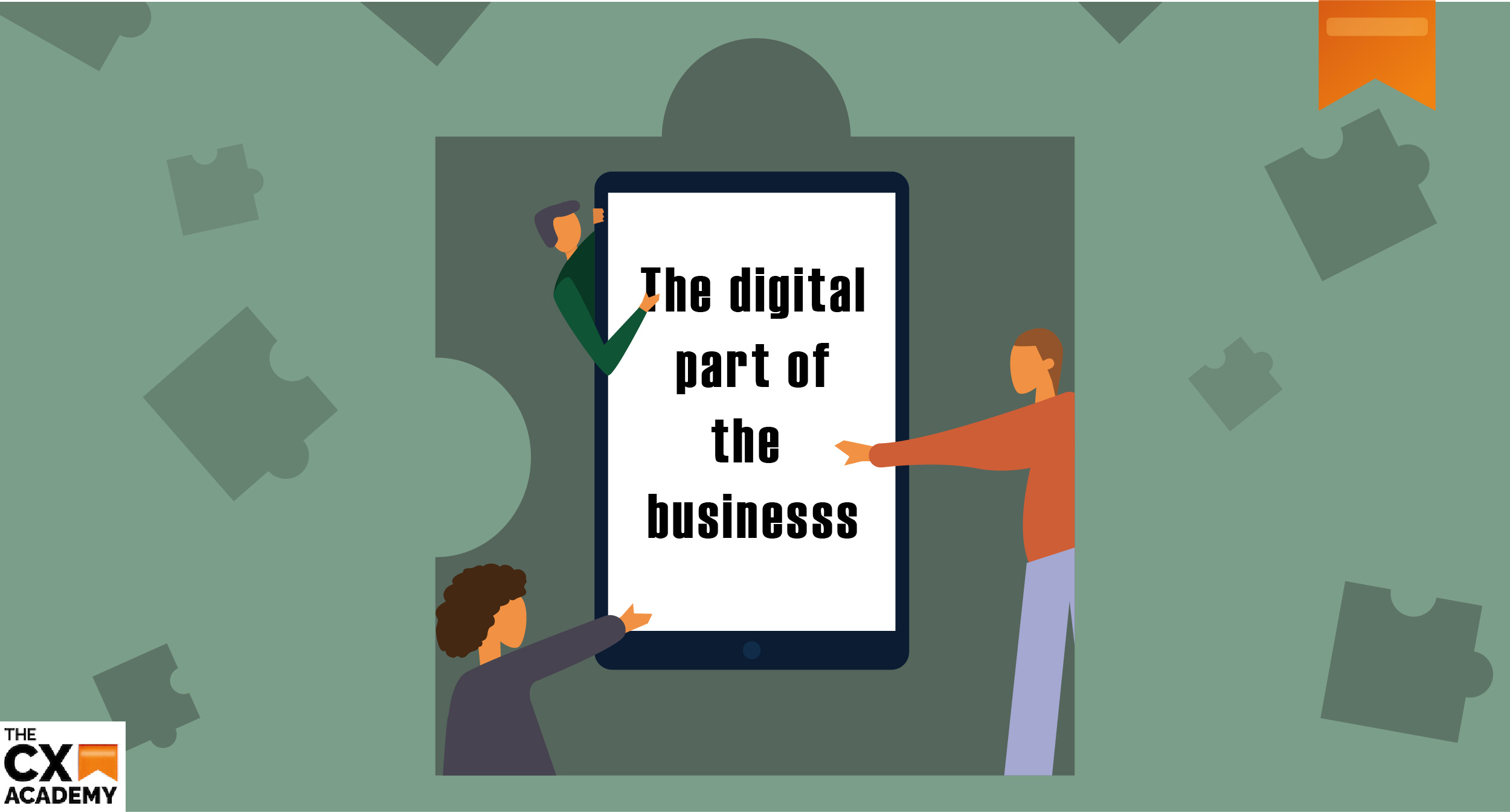We know that while there are similarities, CS and CX are not the same. Ideally, the difference between them would be black and white. Unfortunately we don’t live in a perfect world. Customer Service is certainly connected to CX but it mainly focuses on the technical and functional aspects of the customer journey; the CRMs, procedures, assistance and service provided to a customer. Customer Experience concentrates on the emotional aspect of the journey. CS will affect how the customer feels, of course, but when we are talking about strategy and design, Customer Experience is the umbrella term where the goal is to design an excellent experience for the customer so that they remain loyal and ultimately they become an advocate.
Likewise, UI and UX may seem a lot like each other, but are they?
Just as Yin and Yang are opposites but complementary forces in the ancient Chinese culture, so are UI and UX within Customer Experience design.
User Experience is an umbrella term that refers to the ease and intuitiveness with which an app or website can be used. User Interface focuses on the look and feel of said application to ensure the user will mostly find it aesthetically pleasing and enjoyable to look at. Understanding these differences will help with work organisation, goal setting and planning out the design process.

A deeper dive into the differences
UX focuses on the journey the user is taking through the use of the product. It keeps the user at the centre of all decisions, ensuring that the journey is ubiquitous to their life. The design process needs to take into account the level of computer literacy of the user as well as how the user interacts with the app or website.
It may be a tired mother feeding a baby and trying to book flights at the same time.
A good UX design will make the flight booking process easy, quick and painless to help the user out in these situations. The goal of a UX designer is to reduce the chance of the user getting frustrated and walking away from the product or service before completing the process of a purchase or sign up.
UI deals with the visual aspects of the product. It has to represent the brand and be designed accordingly to company standards. It can have an indirect effect on the customer’s feelings, however this is not fully predictable.
A very important distinction between UX and UI can be seen in our potential user example above.
A tired, busy mother will have zero regard or care for whether the button is blue or yellow, whether the type is Arial or Helvetica or whether she sees an impressive and colourful illustration somewhere along the way of booking her flights. She will ignore all of these factors just to be done with it and get back to her baby.
Unless a product is specifically designed for designers, artists or other subgroups for which the colour theory is of the utmost importance, the average user will more than likely either like it or not.
That is as far as the emotional side of UI goes.
If a button brings a user to an unexpected result, or if they have to fill out their address three times during the booking process, it will directly impact how they feel about the app, product and in turn, the company.

How CX applies to the digital part of the business?
Excellent Customer Experience without an excellent digital experience for your customers is like Santa Claus. It doesn’t exist.
To fully achieve CX Excellence, all touch points on the customer journey must be thought out and designed with the customer in mind. This includes UX/UI.
It doesn’t have to be hard. In reality good research and ability to listen is half of what you need. Research will provide you with insights on what is missing within the experience with your product. While improving your UX design, you should be always creating solutions to a real problem, rather than making improvements based on your assumptions.
Remember in today’s day and age everything is moving more and more towards the digital side. In the majority of the cases most of the customer journey will take place on your app or website. It would be foolish not to invest time and effort into making it easy and intuitive to use.
Good UX design is vital for good CX design. Even if the customer has great trust in the company, if they will experience any difficulty in reaching the goal of their journey, more than likely they will go somewhere else.
The answer
UI focuses on the visual. UX focuses on creating an intuitive and positive experience, in which UI can help. While CS is definitely not CX, it is a part of it. In order for you to reach CX Excellence you can never forget about any of these parts, as balance must be kept, just as in Yin and Yang.
To learn more get in touch or check out our Professional Certificate & Diploma Courses.
